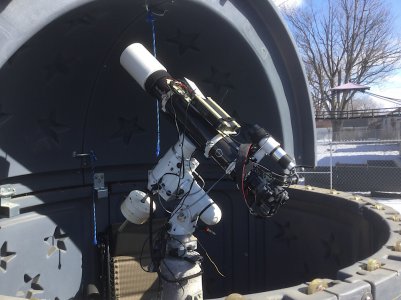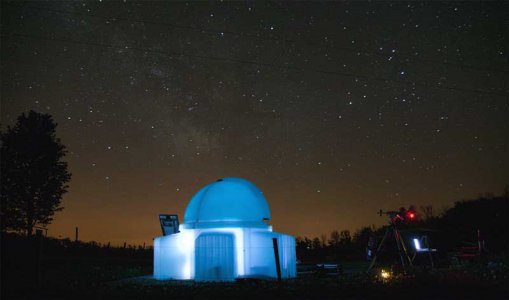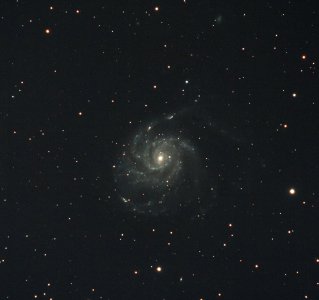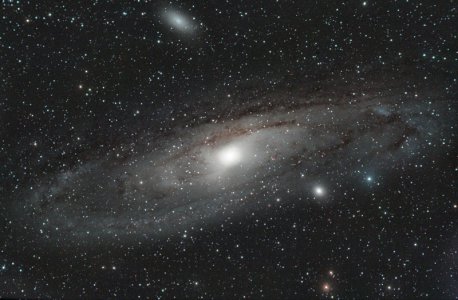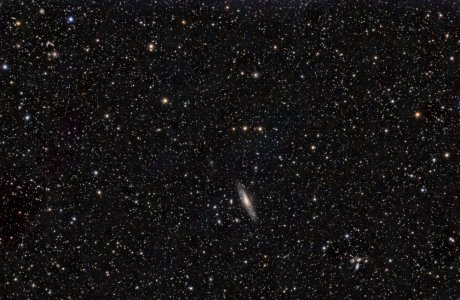- Joined
- Dec 30, 2020
- Messages
- 47
I needed to raise my imaging telescope up off of the dovetail plate to allow for a mini PC and other electronics used for Astrophotography. Riser blocks that fit the specific telescope and only raising the scope a minimal amount are not off the shelf parts so I decided to make my own.
Found a drop of 2x2 6061 bar stock at the metal supply place and after rough cutting on the band saw I milled them to spec.
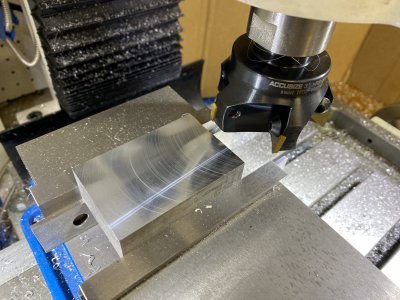
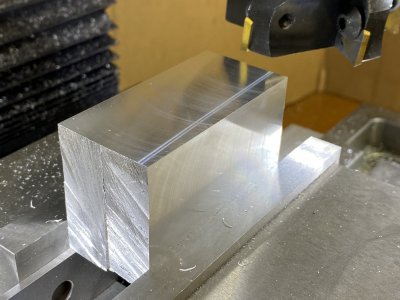
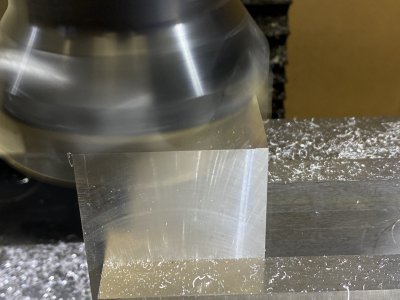
Added chamfers:
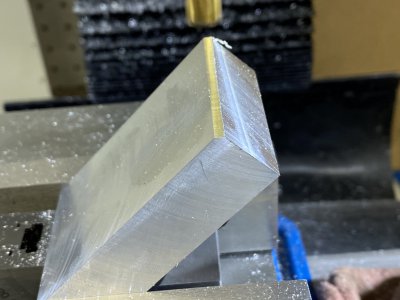
Cleaned and polished on the buffing wheel:
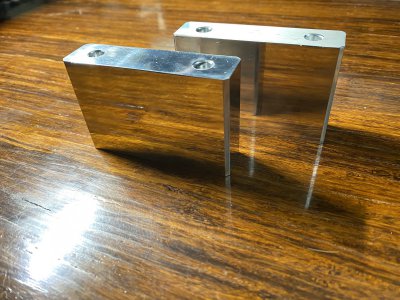
Installed on the imaging rig:
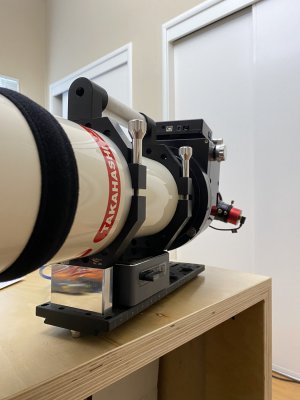
The whole imaging rig at a very dark site in the Sierra Nevada mountains. Where I camped for 3 separate nights to capture enough data to make the image below. The motorized mount tracks a single guide star within the field of view with extreme precision (about .3 arc sec on average) as the target moves across the sky (actually we rotate under neath it). And just for reference, an arc second is 1/3600 of a degree and this mount guides within 1/3 of this amount or about .0000926 degrees:
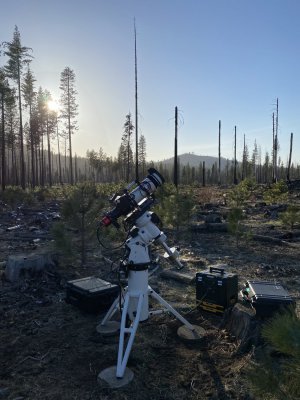
Squid Nebula (blue cigar shaped cloud) inside the Flying bat nebula (red region) with the Dark Seahorse Nebula in the upper right corner. To make images like these we take consecutive exposures of the same field of view for as long as it takes to give enough data to overwhelm the noise associated with the electronics and light pollution. Hundreds of 10min exposures combine into essentially this 54 hour long exposure:
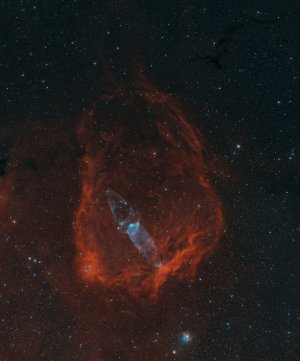
Found a drop of 2x2 6061 bar stock at the metal supply place and after rough cutting on the band saw I milled them to spec.



Added chamfers:

Cleaned and polished on the buffing wheel:

Installed on the imaging rig:

The whole imaging rig at a very dark site in the Sierra Nevada mountains. Where I camped for 3 separate nights to capture enough data to make the image below. The motorized mount tracks a single guide star within the field of view with extreme precision (about .3 arc sec on average) as the target moves across the sky (actually we rotate under neath it). And just for reference, an arc second is 1/3600 of a degree and this mount guides within 1/3 of this amount or about .0000926 degrees:

Squid Nebula (blue cigar shaped cloud) inside the Flying bat nebula (red region) with the Dark Seahorse Nebula in the upper right corner. To make images like these we take consecutive exposures of the same field of view for as long as it takes to give enough data to overwhelm the noise associated with the electronics and light pollution. Hundreds of 10min exposures combine into essentially this 54 hour long exposure:



